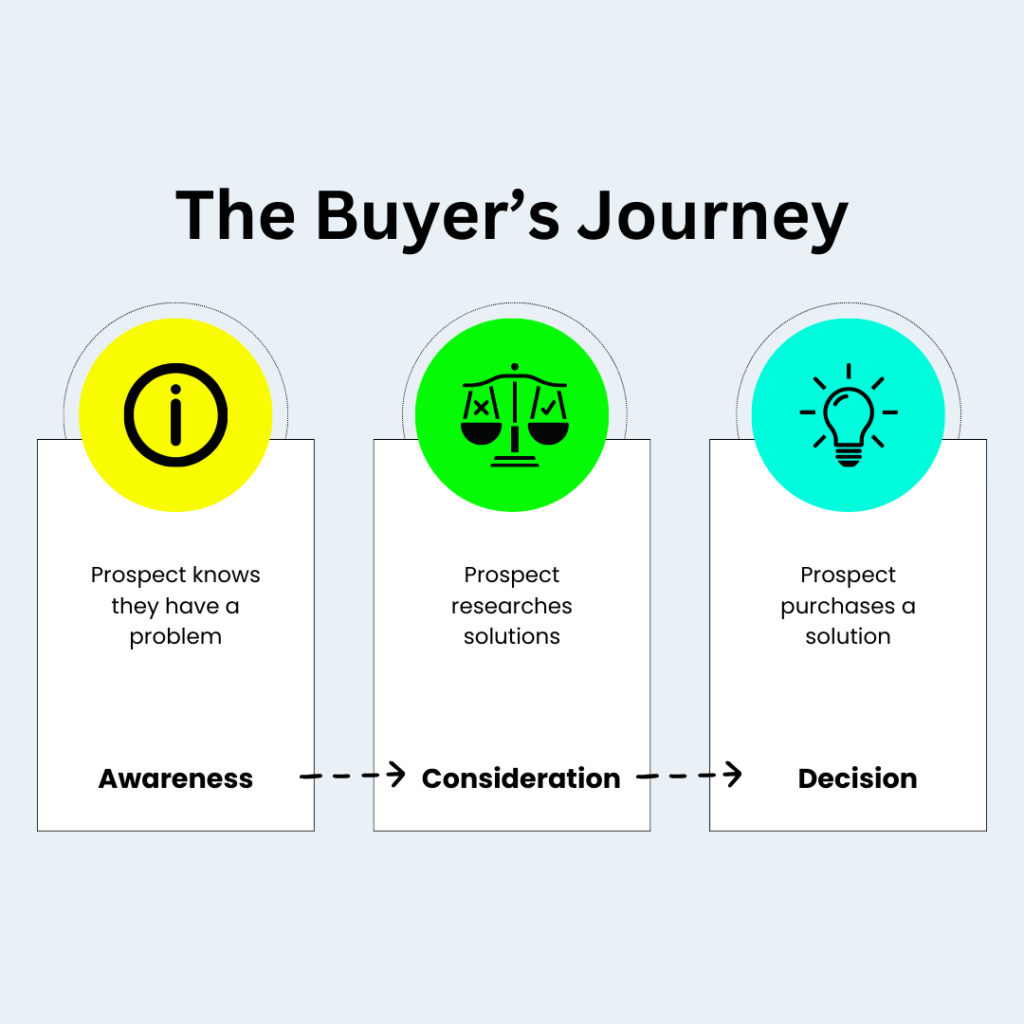What is Dynamic Creative Optimization? (DCO)
Dynamic Creative Optimization (DCO) is a powerful display ad technology that automates the personalization process of ad creatives to match the right message with the right audience.
DCO uses machine learning to adjust creative elements, such as ad copy, images, and calls to action, based on real-time data. This ensures that target audiences receive the most relevant ads tailored to their preferences and behavior.
Understanding how Dynamic Creative Optimization works is essential for advertisers wishing to stay ahead in digital advertising. With the various customer interactions across platforms, DCO campaigns allow advertisers to efficiently tap into data management platforms and utilize information to create personalized ads.
By harnessing the power of DCO, brands can ensure that their ad content is compelling and contextually relevant.
Moving into a Cookieless World
With digital marketing strategy evolving and the gradual phase-out of third-party cookies, collecting first-party data and leveraging DCO strategies are becoming paramount. Advertisers need to know that DCO provides an effective solution in such an environment, as it focuses on personalization without relying heavily on cookies.
Specifically, 71% of consumers have voiced their preference for ads tailored to their personalized interests and shopping habits, emphasizing the critical role of personalization in the digital advertising sphere.
In this new era, a shift towards first-party data collection and the use of DCO becomes essential. Dynamic creative ads, fueled by real-time data feeds, allow for greater accuracy and effectiveness in targeting.
This enhances the user experience by providing them with relevant ads and offers advertisers a robust mechanism to maximize their ad spend and ensure they reach the desired target audience.
The Major Increase of Online Video Consumption
CTV Advertising and video ads are experiencing significant growth. With more users consuming content through online videos, advertisers see an opportunity. DCO enables the optimization of video ads to ensure target users receive personalized ad experiences based on their preferences, ensuring improved ad performance.
The surge in online video consumption signifies a shifting trend in user preferences. In 2023, individuals averaged 17 hours of online video viewing weekly. As people gravitate more towards visual content, dynamic ad campaigns tailored for video become essential.
By using DCO in programmatic advertising for video content, brands can tap into the combination of creative assets and precise targeting, enhancing their ads’ overall impact and effectiveness.
Two Levels of DCO
- Pre-defined Rule-based Optimization: Here, a set of rules determines the combination of creative elements. For instance, users who recently searched for running shoes might receive ads emphasizing sports products.
This approach is more straightforward and effective, especially with clear audience segmentation. Relying on predetermined rules based on known behaviors, interests, or demographics ensures that the served ad content aligns well with users’ expected interests.
- Real-time Machine Learning Optimization: Real-time data and machine learning algorithms determine the ad components. It’s about showing the right creative content based on users’ online behavior, historical performance data, and other variables.
This level of DCO is dynamic, adapting to the ever-changing digital landscape. It’s particularly beneficial for brands with vast and diverse target audiences. By analyzing the intricate patterns in real-time data, machine learning models can predict and serve ads with the highest probability of resonating with a user, leading to better engagement rates.
How is DCO Different from Dynamic Creative?
While DCO and dynamic creative focus on personalization, the key difference lies in complexity. Dynamic creative might adjust a few ad elements based on predefined segments. DCO, however, uses complex coding, machine learning, and real-time data to automatically adjust multiple creative assets on the fly.
Think of Dynamic Creative as the preliminary version and DCO as its advanced counterpart. Where dynamic creative may offer a certain level of customization, DCO takes it several steps further. Especially in an age where users are bombarded with information, the precision and adaptability of DCO ads can make a significant difference in capturing users’ attention and driving desired actions.
How does DCO Work?

DCO advertising takes creative templates and adjusts the creative content based on various data feeds. This could include weather, user behavior, or even product availability. DCO campaigns then serve these ads using a DCO ad server, ensuring the suitable variation reaches the intended audience.
DCO goes beyond the use of static templates. By leveraging machine learning, it constantly learns and refines the ad creatives to resonate better with the target audiences. This iterative optimization process makes digital advertising more efficient and relevant, ensuring the right message gets across to potential customers.
Improved Campaign Optimization
With DCO, advertising campaigns can be fine-tuned in real-time. This ensures the most relevant ads are delivered, reducing ad spend wastage and ensuring the right message reaches the target audience.
By employing a DCO ad server, brands can seamlessly integrate creative management platforms with their advertising strategy. This connection ensures that the ad campaigns are not just dynamic but are also continuously optimized.
Over time, this iterative approach to dynamic creative optimization allows brands to understand their audiences better and further refine their ad creatives, leading to an overall uplift in ad campaign performance.
Dynamic Advertiser Setups
Modern advertising needs dynamic setups. Tools like Data Management Platforms (DMPs) and Creative Management Platforms (CMPs) have emerged. While a DMP manages audience segments and collects data, a CMP focuses on managing creative assets and ad variations.
These platforms work hand-in-hand. For instance, data from DMPs can inform the CMPs about which creative elements or ad variations work best for a particular audience segment. This synergy allows advertisers to use DCO strategies effectively, tailoring ad content to individual user behaviors and preferences.
Programmatic Creative Definition
Programmatic creative is the automated process of creating personalized ads using data and technology. This can be done using DCO or with the support of a Creative Management Platform (CMP). The idea is to streamline the creative process while ensuring the ad content remains relevant.
Programmatic advertising goes a step further by automating the media buying process, ensuring that dynamic creative ads are served to the right audience at the right moment. This fusion of data-driven decision-making and real-time data enhances ad performance, boosting the chances of a successful ad campaign.
Notably, programmatic ad sales were valued at $546 billion in 2023 and are expected to rise to $779 billion by 2028. This growth shows how much this area is expanding, highlighting the role of technologies like DCO in modern digital advertising.
Key Benefits of Dynamic Creative Optimization
Some of the primary benefits include:
- Personalization: DCO ensures target audiences receive personalized ads tailored to their behavior and preferences.
- Real-time Optimization: Adjustments are made in real-time, improving the chances of ad engagement.
- Efficient Ad Spend: By serving the most relevant ads, wastage is minimized.
- Data Utilization: Another significant advantage of DCO is its ability to utilize vast data feeds efficiently. From understanding user behavior to capitalizing on external factors like weather, DCO uses these insights to adjust ad content. This ensures that advertising campaigns are not only dynamic but also contextually relevant.
Dynamic Creative Optimization in Native Video
With the surge in video content, DCO is making waves in native video. It ensures video ads are tailored in real-time based on user behavior, improving engagement rates.
With its rich visual and auditory elements, video content offers a compelling medium for advertisers. Using dynamic DCO in native video advertising allows dynamic ad components to be adjusted seamlessly, such as captions, visuals, or calls to action, enhancing viewer experience and ensuring improved ad engagement.
DCO Responds in Real-time
Unlike traditional advertising methods, where ad creatives are static, DCO uses real-time data to make instant adjustments, ensuring that the right ad reaches the right person at the right time.
This agility makes the ads more relevant and reduces the chances of serving irrelevant ads. Real-time data ensures that even sudden shifts in user behavior or market dynamics can be quickly accounted for, making DCO a valuable tool in dynamic digital landscapes.
What Types of Ad Campaigns Can Leverage DCO?
Almost all! From product-based campaigns to contextual campaigns, retargeting ad campaigns, display ad technology and more. Especially with the increasing demand for personalized and relevant content for consumers, DCO can play a critical role.
Even in niche campaigns, such as those focusing on existing customers or very specific audience segments, DCO can be instrumental. Its ability to adjust and refine ad content based on real-time insights ensures that the campaigns remain agile and effective across various digital platforms and strategies.
What are Creative Management Platforms?

Creative Management Platforms (CMPs) are tools designed to manage, test, and optimize creative content. They work closely with DCO, ensuring that ad creatives are dynamic and engaging.
CMPs offer an interface where creative teams can build, review, and approve ad variations. By using dynamic templates, these platforms facilitate the creation of thousands of ad variants without complex coding. When combined with DCO, it ensures ads are not only visually appealing but also data-driven.
More Use of CMPs in the DCO Process
The global Creative Management Platforms market, valued at USD 985.75 million in 2022, is indicative of the increasing adoption and reliance on these tools in the advertising industry.
CMPs are essential in managing and optimizing creative assets, which is critical in the DCO process. Their integration ensures that creatives are not just dynamic, but also engaging and relevant, aligning with the market’s growing needs and complexities.
With DCO, the use of CMPs becomes even more impactful, ensuring that ads are personalized and resonate with individual user preferences. This synergy between CMPs and DCO is necessary in today’s digital landscape, where the effectiveness of advertising relies heavily on relevance and personalization.
Full Programmatic Creative Coverage: CMPs Include DCO
In the programmatic advertising landscape, CMPs have started to incorporate DCO functionalities, ensuring a comprehensive approach to dynamic ad serving. This integration of CMPs with DCO enables a seamless blend of creative content management and real-time data-driven ad serving.
Advertisers can, therefore, benefit from a unified creative management platform that manages the creative assets and ensures the most relevant ads are delivered to the target audience.
DCO Improves Performance
DCO directly correlates with improved ad performance by leveraging machine learning and real-time data. This direct correlation means better engagement, higher click-through rates, and more conversions.
With the advanced algorithms of DCO, irrelevant ads are reduced, ensuring that users are more likely to engage with the content presented to them. This dynamic adjustment based on user behavior and preferences guarantees a more personalized ad experience, increasing the efficiency of advertising campaigns.
Connect to your Data Management Platform (DMP)
For DCO to be effective, it needs robust data. This is where Data Management Platforms (DMP) come in. By connecting DCO to a DMP, advertisers can leverage rich user data to make real-time decisions on ad creatives.
Real-world Examples of Dynamic Creative Optimization (DCO)
- Retailers: Using DCO, a shoe brand could display ads for winter boots to users in colder climates while showcasing sandals to those in warmer areas.
- Travel Agencies: Based on browsing behavior, a travel agency could promote beach vacations to someone who has been searching for tropical destinations.
- Restaurants: A food chain, through DCO, could advertise its new vegetarian menu to users who have previously shown an interest in vegetarian recipes or restaurants.
- Similarly, an online course provider could suggest machine learning courses to someone searching for AI-related content.
Stay Ahead of the Curve with Dynamic Creative Optimization
In the ever-evolving digital advertising world, DCO offers advertisers a chance to stay ahead. By ensuring ads are relevant, personalized, and engaging, brands can improve their chances of connecting with their target audiences.
Incorporating DCO strategies into a digital marketing strategy ensures that the brand remains agile, adapting to consumers’ ever-changing preferences and behaviors. By serving ads that resonate with individual users, brands can foster a stronger and more meaningful connection.
Two-Part Optimization Process
- Data Collection: This involves collecting data from first-party sources and DMPs.
- Real-time Ad Adjustment: Using the data, DCO makes real-time decisions on the ad components, ensuring they are aligned with the user’s current online behavior.
Understanding the optimization process is essential for advertisers. The first step, data collection, focuses on building a comprehensive user profile. At the same time, the real-time adjustment ensures that the creative content, ad copy, and calls to action are timely and relevant.
How to Set Up a DCO Campaign
- Define Objectives: Understand what you aim to achieve – brand awareness, conversions, etc.
- Connect with DMP: Integrate your Data Management Platform to access rich user data.
- Choose Creative Elements: Determine the various creative assets – images, calls to action, etc.
- Set Rules: Define the rules for when and how dynamic ad creatives should adjust.
- Monitor & Optimize: Regularly review campaign performance and make necessary adjustments.
DCO Trafficking and Logic Setup for Dynamic Creative Advertisers
The trafficking process involves defining how dynamic ads will be delivered. This includes setting up targeting criteria, defining audience segments, and ensuring the ad server can deliver dynamic ads. The logic setup involves determining the rules that dictate how dynamic ads will adjust in real-time.
Identify Where Buyers Spend Time Online
To make DCO effective, it’s essential to understand where your audience spends time. This could be social media platforms, specific websites, or even online communities.
Example Programmatic Creative Use Cases
- E-commerce: Promote products users have previously viewed or added to their cart.
- News Websites: Showcase articles or topics that align with a user’s past reading habits.
- Health and Fitness: For users interested in wellness topics, promote ads highlighting a new yoga class or nutritional supplements. Streaming Services: Suggest shows or movies based on a user’s previous viewing history, ensuring a more tailored content recommendation.
Create Buyer Personas
To maximize the efficacy of Dynamic Creative Optimization (DCO), it is essential to develop detailed buyer personas. This practice has proven successful for 56% of businesses, resulting in the acquisition of higher-quality leads.
By crafting these comprehensive profiles, you gain a more nuanced understanding of your target audience and their preferences, ensuring that your advertising efforts are precisely tailored and more likely to resonate with them.
Confirm Messaging for Each Stage in the Buyer Journey

Different messages resonate at different stages of the buyer journey. With DCO, you can ensure that users receive the most relevant message, whether in the awareness stage, consideration, or ready to convert.
How do Creative Management Platforms (CMPs) and DCO Work Together?
CMPs manage the creative content, while DCO ensures the content is delivered dynamically and in real-time. Together, they ensure that ads are engaging and relevant to the user’s current online behavior and preferences.
The symbiotic relationship between CMPs and DCO allows advertisers to combine the strengths of both tools. While the CMP provides a platform for creating, testing and refining the creative template, DCO uses machine learning and real-time data to ensure these creatives are presented to the right users at the right time.
This combination ensures the delivery of personalized ads tailored to individual user preferences, enhancing ad performance and user engagement.
Conclusion
In the rapidly advancing digital advertising sphere, Dynamic Creative Optimization (DCO) emerges as a powerful mechanism that reshapes the realm of personalized ads. DCO employs sophisticated machine learning algorithms to deliver real-time dynamic ads tailored to target audiences.
By working hand in hand with Creative Management Platforms (CMPs) and utilizing rich data from Data Management Platforms (DMPs), DCO ensures brands are serving the most relevant ads, boosting ad performance while efficiently managing ad spend.
The surge in programmatic creativity and the critical role of video ads accentuate the importance of dynamic creative ads that resonate with users’ preferences and behaviors. In an era dominated by the call for pertinent content, it’s paramount for brands to understand how DCO works and leverage its capabilities.
With concrete examples of dynamic creative application across sectors, it’s evident that whether it’s adjusting ad creatives, refining calls to action, or deciding upon creative elements, DCO is the crux of an effective digital marketing strategy.
As the industry pivots to more user-centric approaches, advertisers need to know that the future lies in seamlessly integrating DCO with their advertising campaigns to truly connect and resonate with their desired target audience.





